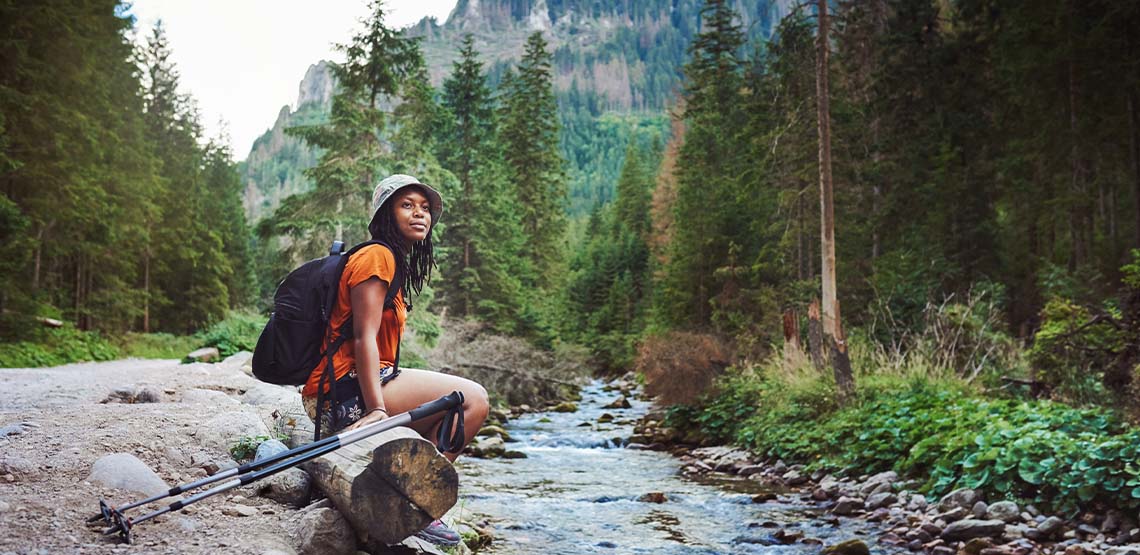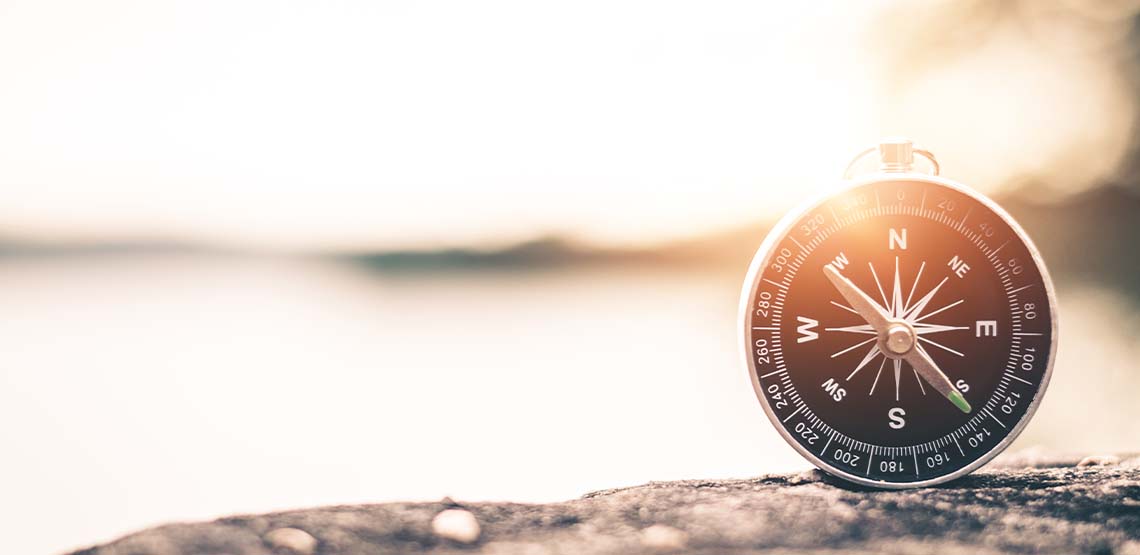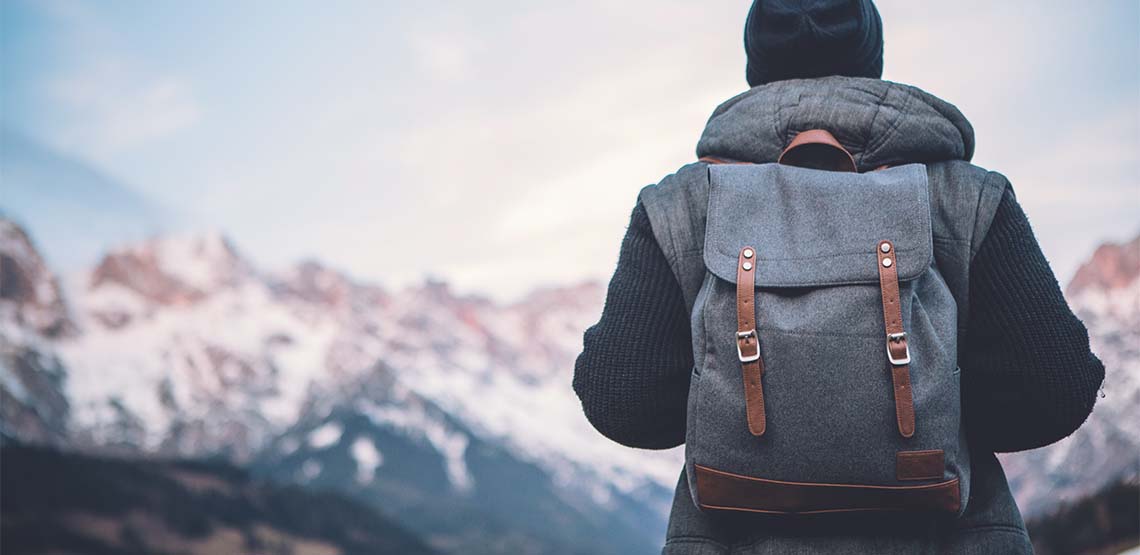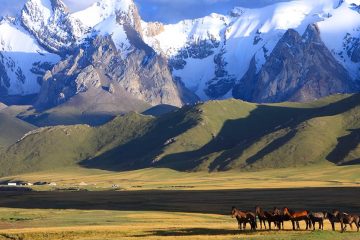Go Hiking Solo Style With These Essential Tips
Must-Have Solo Hiking Essentials
While some people enjoy hiking with a crowd, others prefer to go it alone. Solo hiking essentials allow you to enjoy a bit of alone time and soak in the sounds of the trail. Plus, you don’t have to wait for your schedule to line up with anyone else; you can head out anytime you want!
Whether you’re an avid solo hiker or are just getting used to the idea of hitting the trails alone, we’ve rounded up everything you need to know about solo hiking essentials to make your outdoor adventure successful.
Why Try Solo Hiking?
Solo hiking can have many benefits. It provides you with a chance for silence and solitude, which are often lacking in today’s busy world. These times alone in the woods give you a chance to reflect, meditate, and relax without worrying about making small talk with others.
Solo hiking also allows you to set your own pace. You won’t have to worry about rushing to keep up with a friend who walks too fast or waiting around for that group member who takes way too many photos. Instead, you’ll be able to hike at the exact right pace for you. If you decide to take a break, stop early, take a side trail, or add on a few extra miles, you won’t be inconveniencing anyone. You only have to worry about yourself, and there’s some comfort in that.
Precautions and Concerns When Hiking Alone
While there are many fantastic reasons to hike alone, solo hiking does come with a few more inherent risks than hiking with a group. However, when proper precautions are taken, it can be a safe and rewarding activity.
Let Your Family and Friends Know Where You Are
First off, when you are hiking alone you should make sure that someone always knows your plans. Details should include the route you plan to take and what time you plan to return home. This is always a good idea, but it is especially important in areas where there is limited cell service.
Use a Map or Compass
Getting lost is one of the most common problems faced by solo hikers. When you are hiking in an unfamiliar area, you’ll want to make sure that you are careful to stay on your planned route. Hiking with a GPS or an app like AllTrails can be helpful, but you won’t want to rely on technology alone. Having a compass and map (and knowing how to use them) is important in case your GPS fails you.
Know the Animals in the Area
Animal and human attacks are also a concern when you are out in the wild alone, since your ability to defend yourself is more limited than when you are with a larger group. Attacks are rare in most areas, but it’s important to educate yourself on the behavior of large animals in your region and how to respond in the case of an attack. For aggressors of the human variety, pepper spray can be a good deterrent.
Check the Forecast
Weather and natural disasters can also be a risk anytime you are out in the wild. Prepare yourself by taking note of any potential hazards in the area you are hiking. Listen to weather reports and take necessary precautions to mitigate any potential risks. If there’s a chance of bad weather occurring, you can always reschedule your hike.
When exploring somewhere new, do these things to ensure you get a full experience of your destination from cuisine to culture.
What to Pack and Wear When Solo Hiking
Snacks
When you are going on a solo hike, you’ll want to make sure you plan and bring along the right supplies. First, bringing enough water and snacks for your planned hike is important, so you can stay hydrated, energized, and comfortable on your hike.
Navigation Tools
Navigation tools such as a GPS, map, and compass are a must. A knife or multi-tool can be a valuable asset, and a first aid kit is a wise choice as well. Many people prefer to hike with trekking poles which can help with stability and managing steep terrain.
Layers of Clothing
Dressing in layers allows you to be prepared for whatever may come your way weather-wise. You’ll want to be able to remove a layer if you get too hot or add a light jacket if you are chilly. Choose clothing made from moisture-wicking fabrics and material that protects from UV rays. Choosing the right footwear can make a big difference in how your hike goes. It’s important to wear appropriate shoes for the terrain and weather. Good, hiking boots are the best option because they provide support for the ankle while also increasing traction. To find some great outdoor clothing, you can check out Lands’ End and L.L.Bean.
Sleeping Supplies
If you are taking a multi-day trek, you’ll need to bring more supplies, such as a tent, a sleeping bag appropriate for the temperature, a change of clothing, a flashlight, any required medications, and toiletries, for starters. You’ll also need additional food and water. As you pack your bag, you’ll want to make sure that you don’t pack any more than you need. Since you’ll be carrying all of your supplies on your back during the hike, you’ll appreciate a lighter load.
A Backpack
Speaking of backpacks, choosing the right backpack for your hike will help with your comfort during the trip. Having an uncomfortable backpack, or one that’s too heavy, will put a damper on your whole trip. The size of your pack is directly related to the length of your trip and how much you plan to carry.
Usually a 30 to 50-liter bag is enough for a weekend trip, whereas if you want to take an extended hike, you’ll need to move into the larger sizes. The fit is important as well. Visiting a brick and mortar outdoors specialty store is a great way to try out a few bags. They usually have helpful staff who can advise on the best fit for your body type and style of hiking.
Getting Started With Solo Hiking
Start slow with solo hiking essentials. If you haven’t hiked much in the past, don’t set off on a multi-day backpacking trip by yourself. It’s better to underestimate your skills when you are just getting started.
Take a few short day-hikes and build up your stamina over time. From there you can increase your distance and your level of difficulty over time.









